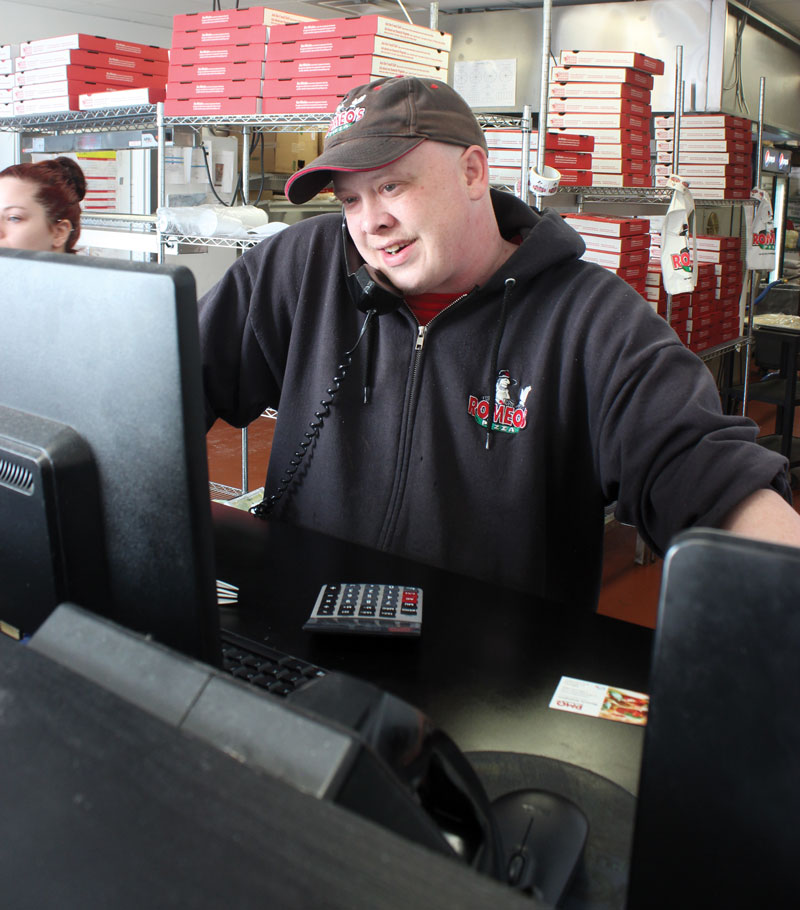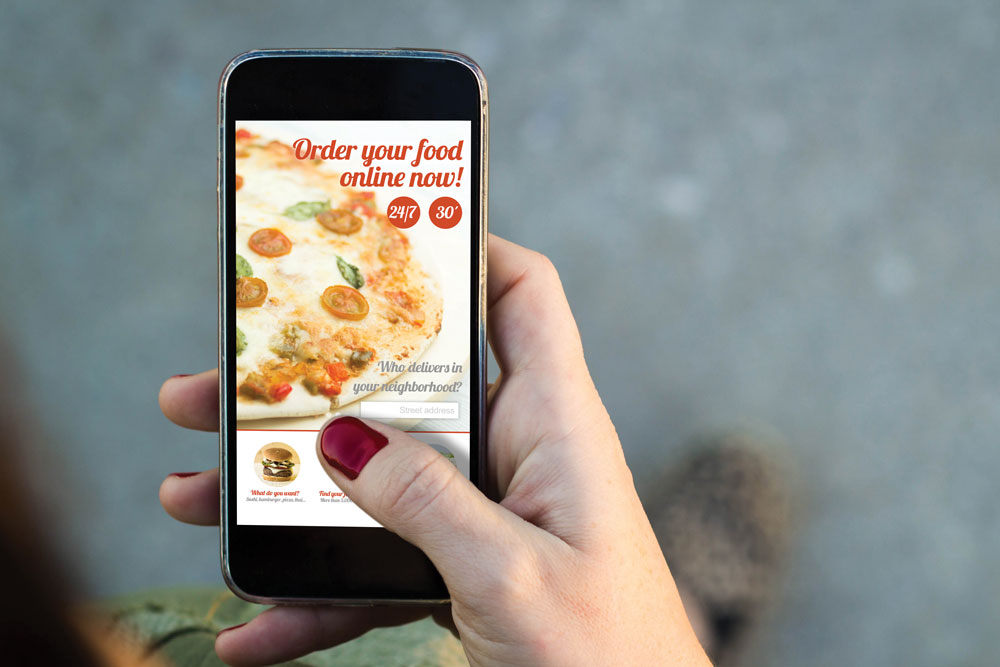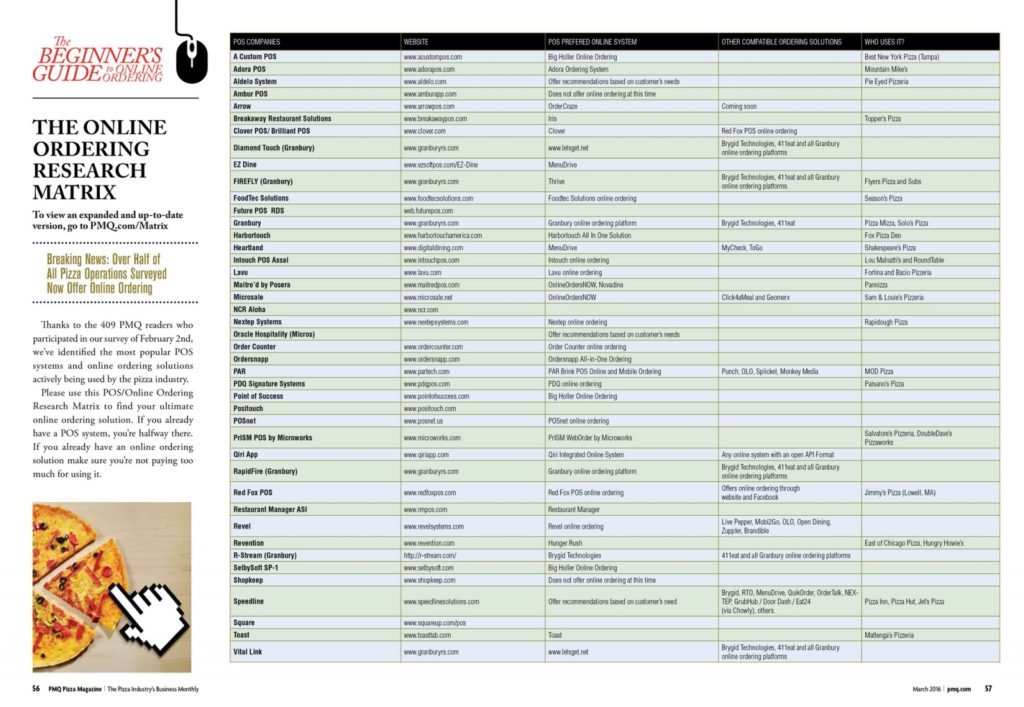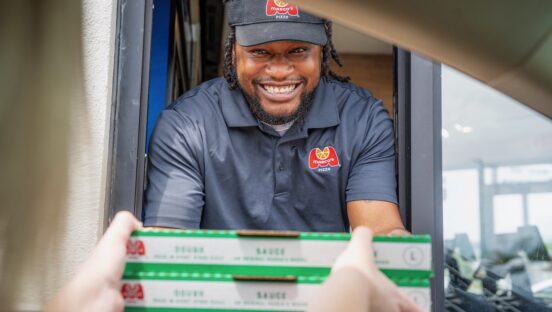According to the 2016 PMQ Pizza Power Report, digital ordering for restaurants is growing 300% faster than dine-in traffic, and 60% of customers say that ordering delivery or carryout via a smartphone app is easier than calling a restaurant. It’s getting more and more difficult for independent operators to ignore the public’s demand for online ordering.
“As pizzeria operators, we all know the technology need is there,” admits Matt McClellan, owner of Tour de Pizza in St. Petersburg, Florida, and a brand-new adopter of online ordering. “I have an old-school philosophy, and I don’t like change; I entered into online ordering with a lot of fear and hesitation.”
The fear isn’t necessarily unwarranted in some cases. Jonathan Schroeter, director of operations at Il Primo Pizza & Wings, with six locations throughout southwest Florida, says that before finding the ChowNow platform he’s been using since 2014, he initially worked with an online ordering company that caused a lot of frustration. “I pulled the plug and took a loss as opposed to introducing my customers to a sloppy platform,” Schroeter says. “The process with ChowNow was very simple.”
A similar scenario happened at Tacoma, Washington- based Farrelli’s Pizza, when Clayton Krueger, director of marketing, communications and beer, decided to wait for the pizzeria’s existing POS provider to introduce online ordering. “We’re pleased with the system now,” he says, but the initial process proved challenging. “In the beginning, we didn’t want to limit pizza customization, and the system has to be able to interpret everything someone can modify. We had to make some tough decisions.”
Fortunately, most POS companies work closely with their clients to ensure a smooth transition. And pizzeria operators who implement online ordering typically are glad they did it once all of the kinks get worked out. “Industry analysts—as well as most restaurants—agree that an online order averages 18% more than an order placed over the phone or in person,” notes Larry Fiel, director of marketing for Signature Systems, a Philadelphia-based provider of the PDQ POS software and online ordering technology for pizza restaurants. “When you think about it, it makes sense—versus [calling on] the phone, you see the whole menu online, so you order items you wouldn’t normally order over the phone. In person, it’s generally a time thing. When there’s a line, you don’t want to hold people up, so you typically go for ‘the usual.’”
Getting started with online ordering is the hardest part for many operators. Seeking out advice from those who have already gone through it, coupled with a good dose of personal research, can help you overcome any reservations you may feel about adding online ordering. “For operators, the best part of online ordering—other than the anticipated increase in revenue—is the fact that there’s really nothing technical to understand,” Fiel adds. “The POS provider seamlessly sets up the menu with the operator’s branding. Then, when an online order is placed, a ticket automatically comes out of the printer in the kitchen while the order appears on the POS. Wow, talk about easy!”
In other words, offering online ordering makes life better for all parties concerned. Here’s how to get started:
1 Do your research.
There are dozens of online ordering companies out there. Many will build everything for you, while others will integrate their platforms with your existing POS system. (See page 56 for more information.) It’s vital to research all of your options and ask a lot of questions before choosing a provider. “I knew I wanted a seamless process,” McClellan says. “In the past, I’ve gotten solicitations from every online ordering product on the market, including those that I knew right away wouldn’t work for me.”
McClellan says he talked to a lot of solid companies, but some were too expensive for his small pizzeria. “I want to reach millennials and get my brand in front of them,” he says. “But I don’t want to spend $20,000 in the process.”
2 Start with your existing POS system.
If you have a POS system, you already have an advantage. You may find that you can easily—and affordably—integrate online ordering through your POS terminals. This is where McClellan finally landed after his research. “I found OrderCounter, a company that interfaced with my existing hardware and made integration seamless,” McClellan says. “Now my employees just see an order pop up and don’t miss a beat. They don’t need to know the difference between phone or online orders.”
Tim Freida, vice president of sales at Microworks POS Solutions in Webster, New York, says his company launched straight-to-POS online ordering in 2004. “Our service requires our POS system to be in place at the store, but once it is, we handle the technical installation on our side,” Freida says. “We use the same pricing engine on the [ordering] interface as we do in the store, which makes menu changes very simple. You can change the pricing on the POS system, and it follows through to the [ordering] portal and even to the customer website all at once.”
If you don’t already have a POS system but still want to take this route, start with a pizza-focused POS provider, Krueger suggests. “Pizza POS providers understand what you need as a pizzeria operator,” he says. “Setting you up for delivery, online ordering and more should be easier.”
3 Explore third-party providers.
You’ll have a lot to choose from here, such as GrubHub and Eat24, so when you visit other pizzerias that provide online ordering, ask the owner or manager about that system’s pros and cons. Additionally, keep in mind that more POS vendors now offer online ordering interfaces that support third-party integration. “Our restaurant clients want web and mobile ordering but don’t want to sacrifice control over the guest experience,” says Jennifer Wiebe, marketing manager of SpeedLine Solutions, based in Lynden, Washington.
“With the open Speedline interface, they can connect the point of sale with the best online ordering systems on the market or design their own web and mobile sites and apps and keep control over the online ordering experience.”
 |
|
Sixty percent of customers say ordering delivery or carryout via a smartphone app is easier than calling a restaurant. |
4 Make sure you’re in control.
Will you be able to update your own menus and promotions on the fly? This is an important feature, no matter what type of online ordering provider you choose. “I had an account executive assigned to me who verified my pricing and product,” Schroeter says. “She also trained me on everything I needed to know to make changes to the menu and to make them for all locations at once.”
Look for a system that provides one master menu with pricing, modifiers, store rules and inventory for multiple locations, Freida suggests. “Stores should be able to have their own pricing and rule sets and offer different products per store. All data should be included in the master menu, and you should be able to make changes for all stores in that one data set. The menu should then sync at each store location.”
5 Nail down the costs, including hidden fees.
Many companies may want to quote a range of prices depending on the size of your pizzeria, number of orders, etc. Get them to lock down a tangible number so you can make an informed decision. “I believe our setup charge was waived because we have five pizzerias,” Schroeter says. “We pay $90 per month, plus 2% of all orders placed through the platform.”
McClellan says he paid less than $1,500 for the licensing rights to OrderCounter on all of his existing stations. “The cost was a fraction of what it would have been to replace the entire POS system,” he says. “Now I have Google Maps, online ordering and a cloud-based system that lets me access the system from anywhere.”
 |
|
Many customers still prefer to place orders on the phone, so companies like Romeo’s Pizza, headquartered in Medina, Ohio, offer both call-in and online ordering options. |
6 Know what you’re expected to purchase before you sign.
Ask up-front if you’ll need to purchase terminals, software licenses or other equipment that’s required to make an online ordering service work. “The only equipment that’s needed with ChowNow is an iPad Mini, which was provided to us,” Schroeter says. “Because ChowNow does not integrate with any POS system, the iPad is used for the delivery of orders. The customer simply places his order via either our website, our app—which they created for us for free—or our Facebook page, which they set up for us. When the order is complete, it’s sent to the iPad, and we put the order through to our POS system.”
If you do need a POS system, McClellan recommends a quick online search. “There are a lot of high-quality used terminals being sold online by restaurants that had to close for one reason or another,” he says. “Some of these terminals are top-of-the-line, and you can get them for pennies on the dollar. Then you just add your own software.”
7 Insist on a completion date.
In business, time is money, so find out how long it will take from the day you sign your contract until you accept your first order. “The overall process took us about a month,” says Schroeter, who saw a return on his investment the first month. “We timed it so the relaunch of the website and online ordering coincided together. It was as simple as powering on the iPad and logging into the program—then you’re ready to receive online orders.”
With an online ordering system built into your POS, Freida says you can be up and running in a week. In some cases, it’s as simple as inserting an “Order Now” button on your website.
8 Make sure it’s mobile-friendly.
As mentioned earlier, a good portion of online orders now come in through mobile phones, and this trend will only rise. So before signing on the dotted line, make sure your online ordering provider can help you with a mobile app. At the very least, the service should be mobile-optimized. “If customers access your order page from their mobile phones and it doesn’t adapt to their screen size, they’ll give up fast,” says Krueger.
Online ordering has a proven track record of increasing order amounts for both new and existing customers. “We see online ordering as an added value for our guests, even though we don’t offer delivery,” Krueger says. “Our customers still order online for carryout, and we receive between 20 and 60 orders per month. It’s not a huge sales driver for us, but it’s an added value, and we want to provide what our customers want.”
But Krueger’s online orders will likely increase in the next few years. “Online ordering is set to overtake traditional telephone orders for the first time, according to new data from market research firm NPD Group,” Fiel points out. “In just five years, the number of online orders has skyrocketed, from around 403,000,000 in 2010 to 904,000,000 by May 2015.”
Schroeter agrees. “Having online ordering shows our customers that we are progressing as a company and are investing in the future. It will become increasingly more valuable as time goes on.”
















